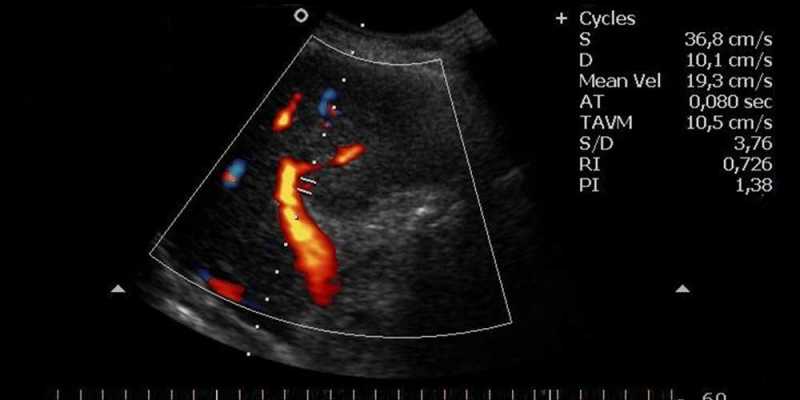A Doppler is a form of ultrasound scan that's used to assess your baby's health. A Doppler measures blood flow in different parts of your baby's body, such as his umbilical cord, brain, kidneys and heart.
A Doppler scan can be performed at the same time as a normal ultrasound and uses the same equipment. Most modern ultrasounds have a Doppler function.
Your doctor will find a blood vessel to check, often in the umbilical cord, and switch on the Doppler function. Screen images in 3D and 4D show how your blood is flowing, and the machine analyses this. It takes just a few minutes during your ultrasound scan.
Why might I need a Doppler scan?
You may need a Doppler scan if you need extra care during your pregnancy, for example:
- If you're carrying twins sharing a placenta.
- If your baby is affected by rhesus antibodies.
- If your baby is affected by parvovirus.
- If your baby isn't growing at the rate he should be.
If your baby is small for dates, a Doppler scan can be used to see if the placenta is working normally. It does this by tracing the blood flow between the placenta and your baby through the umbilical cord.
What does a Doppler scan look for, and why?
A Doppler scan checks that enough blood carrying oxygen and nutrients is reaching your baby. Your doctor looks at the elasticity of the arteries in your system that carry blood into the placenta.
The walls of your umbilical arteries should be stretchy enough to allow as much blood through as possible. This is called low resistance. If the blood can't get through to the placenta easily enough, your baby may not get the nutrients and oxygen he needs via the umbilical cord. Factors such as smoking, high blood pressure, hormone levels or certain medications may increase the resistance in your artery walls.
Without enough nutrients and oxygen, your baby won't grow as well as he should.
If this is the case, you may be advised to give birth early. It's a different picture if you just happen to be carrying a small baby. A small baby with a normal blood flow via the umbilical cord is probably getting all the nutrients he needs.
What is a cardiotocograph?
A cardiotocograph (CTG) is a form of Doppler ultrasound that monitors your baby's heartbeat and checks that it's beating at a normal rate. A healthy baby's heart rate varies from beat to beat and increases when he moves around.
You can ask your doctor to listen to your baby’s heartbeat early on, but this may make you anxious. That's because your baby's heartbeat may be hard to find any earlier than 18 weeks.
If you have a normal pregnancy you won't need to have a CTG. If you can feel your baby moving regularly during the day, he's likely to be fine. If your baby's movements slow down, it's important that you get in touch with your doctor.
How is a CTG used during labour?
A CTG which is used during labour is also known as electronic fetal monitoring (EFM).
EFM is used to monitor your baby's heartbeat and your contractions during labour. In a low-risk pregnancy and labour it's not usually necessary. That's because midwives have other, less invasive ways of monitoring which should be enough to take care of both you and your baby.

